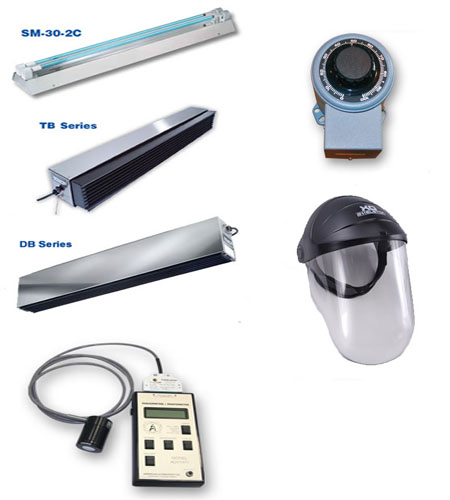 Back to product listing
Back to product listing

Model - UVC OR Package
Reduce HAI's in
Operating Rooms
SM-36-200 (8)
Dimming, ceiling-mounted, fixtures for direct surface and air-disinfection.
TB Series Fixtures (2-4)
For upper air disinfection.
DB Series Fixtures (2-4)
Door barrier fixtures mount above doorways.
Radiometer
Measures UVC energy at surgical sight (knee, hip, etc.)
Adjustable “Variac” enables personnel to maintain desired intensity level
Safety Equipment
UVC safety shields and UV absorbing cream ensure safety of all operating room personnel
Meet appropriate ANSI, OSHA and NIOSH Standards for eye and face protection
Training
On-site training of all personnel is always recommended for the best safety precaution
Ultraviolet Germicidal UVC
Operating Room Packages from American Ultraviolet reduce the threat of microbiological contamination of the surgical wound during orthopedic surgeries by continuously disinfecting the wound surface, and the environment around the patient, with cleansing germicidal UVC. Postsurgical infection rates, including healthcare associated infections (also known as hospital acquired infections), can be reduced significantly, as shown in studies based on the use of
American Ultraviolet OR Packages.
Studies as far back as 1937 (Duke University, Durham, North Carolina), and as recent as 2007 (Center for Hip and Knee Surgery, St. Francis Hospital-Mooresville, Mooresville, Indiana) report the effectiveness of ultraviolet light in reducing overall post-surgical infection rates. In the Duke study, during the first five years of use, overall infection rates on clean cases showed a significant decrease from 10% to 0.24%; on the orthopedic service, a decrease from 16.5% to 0.75% was reported. For the next 26 years, the overall infection rate was reduced to 0.34%1
The St. Francis study (July 1986 to July 2005) shows the infection rate in operating rooms decreased significantly, from 1.77% to 0.57%, when UVC light was used, even when laminar airflow was eliminated. Furthermore, the decrease in the infection rate for total knee replacements was also significant, from 2.2% to 0.5% (p <0.0001).2